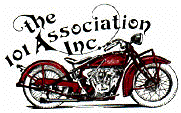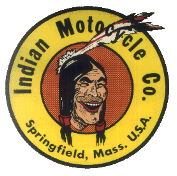Thank you Manny, Tim and Philip for all the good and interesting information.
I can not say how many miles or KM pass before I need to clean out the carbon around the valves but my guess would be 1,000 or once every year - - until, I had this mid season bits of carbon holding up the exhaust valve (casual, short-trip seasonal riding of 6 months) over my now 7 years of ownership and use.
And I can not speak of prior owner's usage since the last rebuild - 5,000 miles may be a reasonable guess.
My oil pump has always metered the needed amount with little excess to drain.
It may interest you, I attribute my excessive carbon build-up to the following 3 discoveries when I opened up and did inspections & careful instrumental measurements:
1. Worn rings leaving end gaps: 0.09-0.11 in. variably by position in work cylinders.
2. Valve guide wear over or beyond the standard .003 (intake) and .0045 (exhaust): variably and minimally .003-.004. Rear exhaust had the highest wear.
3. Cylinder wear: Bore gauge measurements over the standard bore (2.875 in.) measured on thrust sides
Front Top: .0045
Front Middle: .0070
Front Bottom*: .0010
Rear Top: .0045
Rear Middle: .0068
Rear Bottom: .0005
*Engine was "stroked" and piston skirt descends way below bottom of cylinder, almost touching flywheel.
The cam ground pistons found in there (which match in dimensions and appearances 1940's-1950's Toledo Steel Products) measured closely with NOS same pistons I have except at the largest diameters (the "reference points") located at top of skirt and under rings major and minor thrust sides: .010 over the standard clearance of 0.12.
These old pistons showed wear on the skirts below the reference points where against the major and minor cylinder thrust sides but little to measure.
For now, I reused the old pistons which now give a minimal clearance of 0.22, installed new NOS McQuay-Norris rings meant for these Toledo pistons and leaving new ring end gaps at slightly worn top and bottom of cylinders (measured installed) of .12 in. (not too far from the minimum of .003 x approx 3 inches of diameter). That's as tight as possible with rings from the box - no trimming. But the gaps will enlarge at the middle of the worn cylinders.
I only stone ground the cylinder walls to seat in the rings. I will hold off boring as long as possible. I have NOS 5 over pistons and rings at hand for the far future.
I reinstalled the old, worn valve guides but replaced and lapped new valves and provided new springs. The old springs were extremely shortened (and thus presumably weakened).
I received new guides which I will install this winter, after my engine machinist reduces the intake ends to 0.5 in to fit seals.
You may be interested to know the engine seems to have a stroke of 3.828 in. (stock: 3.50 in.) with a piston pop-up of .109 in. (not very accurately measured).
The valves had been cut down from diameters of 3.75 in. and the tops were milled to remove metal and lessen their weights, more from the intake valves leaving a depression in each and less from the exhaust leaving them with flat tops.


